countryside reloaded
a group project, that raises questions about the romantic notions we have about the countryside
year 2017
categories curating, art direction & teaching
staging & spatial Installationscommissioned by
curated by
Angela Rui and Maja Vardjan
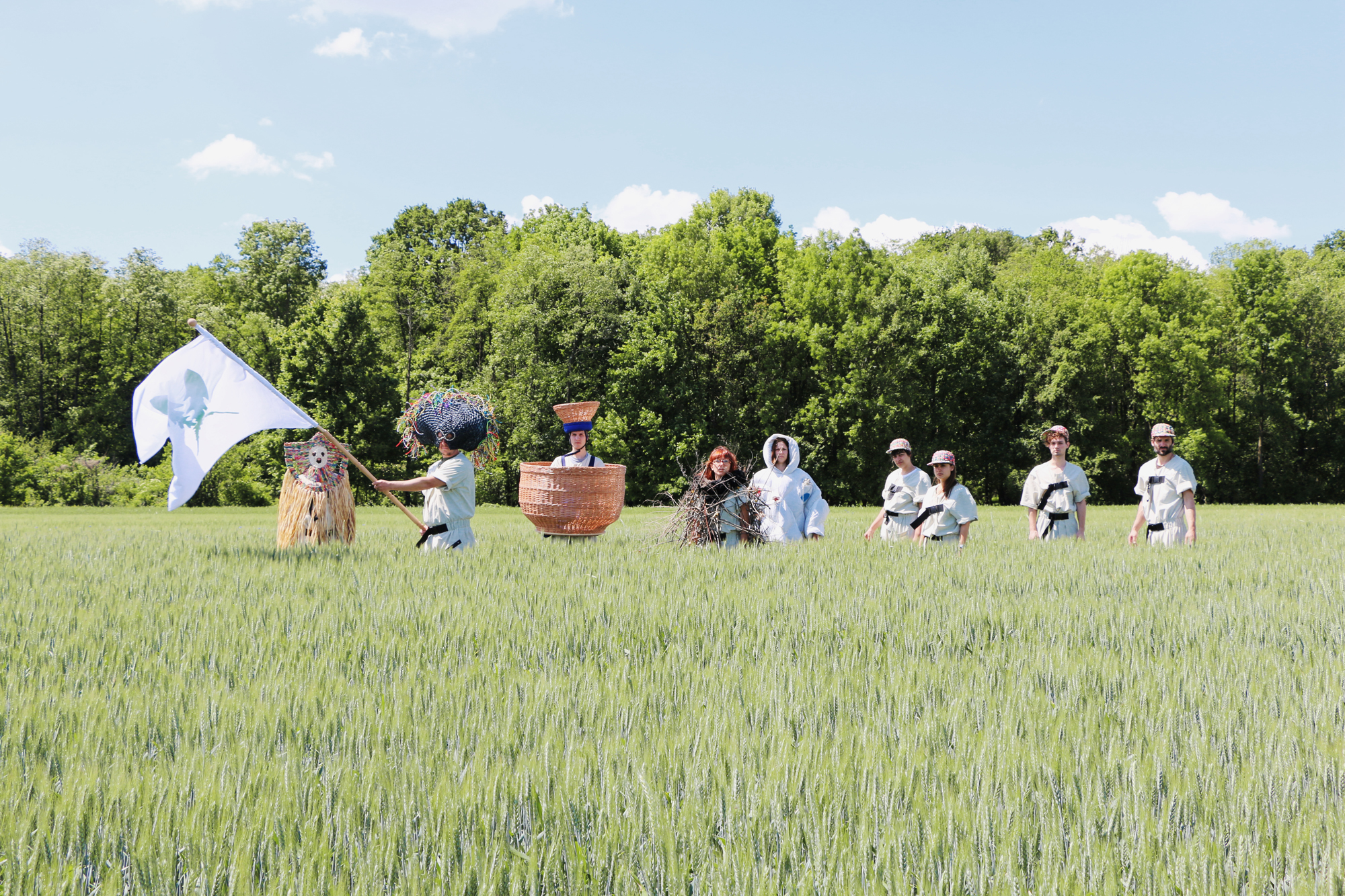
The Ljubljana Design Biennial 2017 entitled BIO25 – Farawaysoclose, curated by Angela Rui and Maja Vardjan at the MAO Museum in Ljubljana, invited us to join that edition of the Biennale as so called ‘translators’ to lead a group-project. The international and interdisciplinary team consisted of: Sara Evelyn Brown, Lucia Massari, Nina Mršnik, Johanna Schmeer, Giulia Soldati, Jakob Travnik and us supported by our team Elisa Polner and Bernd van Riel. Countryside Reloaded was our topic to research and to generate a group-project. The group received additional feedback and input by the food researcher Klemen Košir.
From September 2016 until May 2017, the team met many times to discuss and brainstorm together about the countryside and its functions, dysfunctions and possibilities formulating common and individual Design concepts that worked well together as a whole to tell the story of humans as temporary visitors in the constructed countryside: The surroundings of the Genterovci village in the Lendava region of Slovenia has been temporarily transformed into a land of knowledge, a space of awareness and criticism, where food production, consumption, and information are experienced along a 4km-surrealist tour that offers not only walking, but also foraging and eating. Physical interventions along the path function as a live experience of augmented reality exposing the artificial dimension of nature: highlighted navigation elements emphasize the rigid geometry of the land, food fields with 3D infographics feature data related to food production and consumption, and harvesting devices showcase the autonomy of the machines that have replaced human labour. The empty supermarket, as the starting and ending point of the paths, has replaced the model of acquiring food from local exchanges, and is now transformed into a fleeting place for social exchange conveyed through the experience of food. With these varied approaches, each component of the episode, sensitively revisited and staged in the exhibition, challenges the viewers’ perception of the countryside’ (Bio 25 catalogue excerpt)
The path and local projects were installed on site and on view from May until November 2017.
Jakob Travnik: highlighted realities

a curated trail entitled highlighted realities - Constructed narration of the countryside, in Genterovci near Lendava is marked by a system of pink-coloured wooden elements. All the elements together with their specific arrangement within a particular area highlight certain constructed aspects of the countryside such as straight lines, right angles and man-made bodies of water. Within each cluster, the juxtaposition between the variously-positioned elements and the constructed ‘natural’ surroundings suggests a particular type of function, such as a viewing direction, the way to a resting spot, or a direction to take.
image credit: Delfino Sisto Legnani & Marco Cappelletti - MAO 25
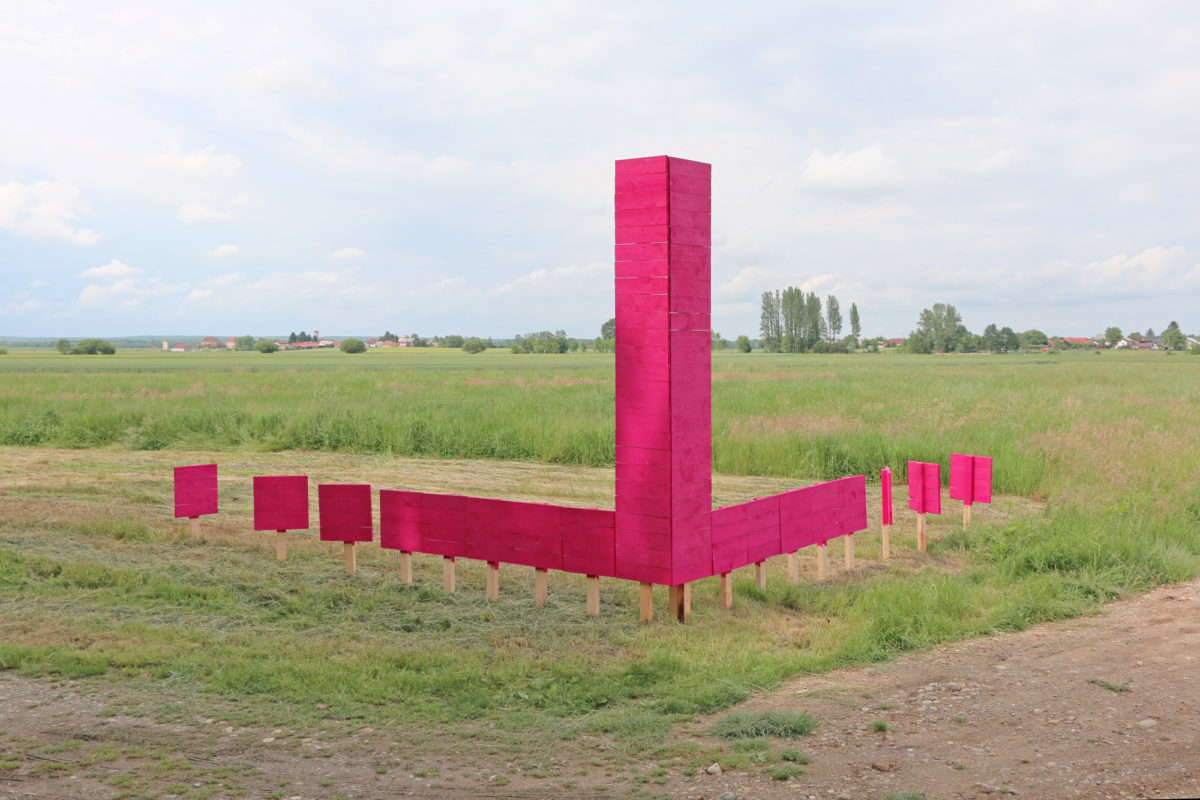
a huge pink gizmo marks one corner of the path underlining right angles in the constructed countryside
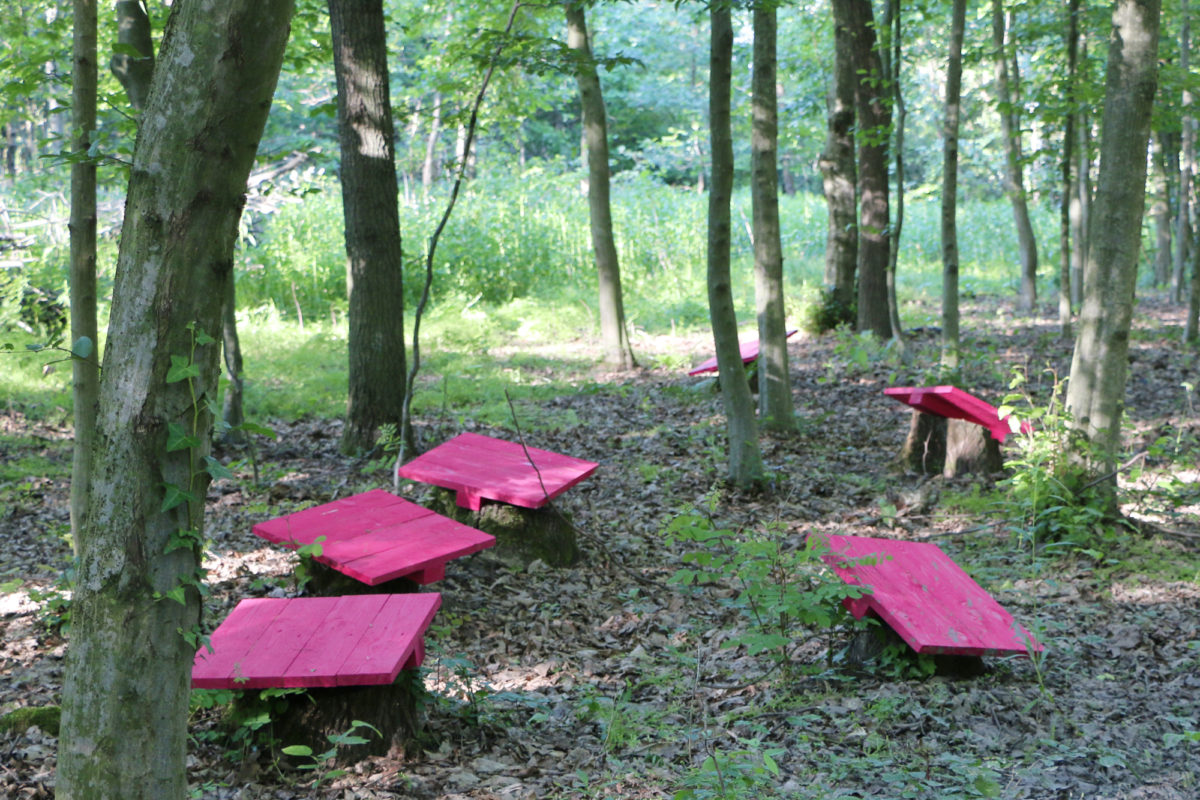
pink elements in the forest inviting to view the scenery and realizing the difference between constructed fields and randomly appearing forest element.
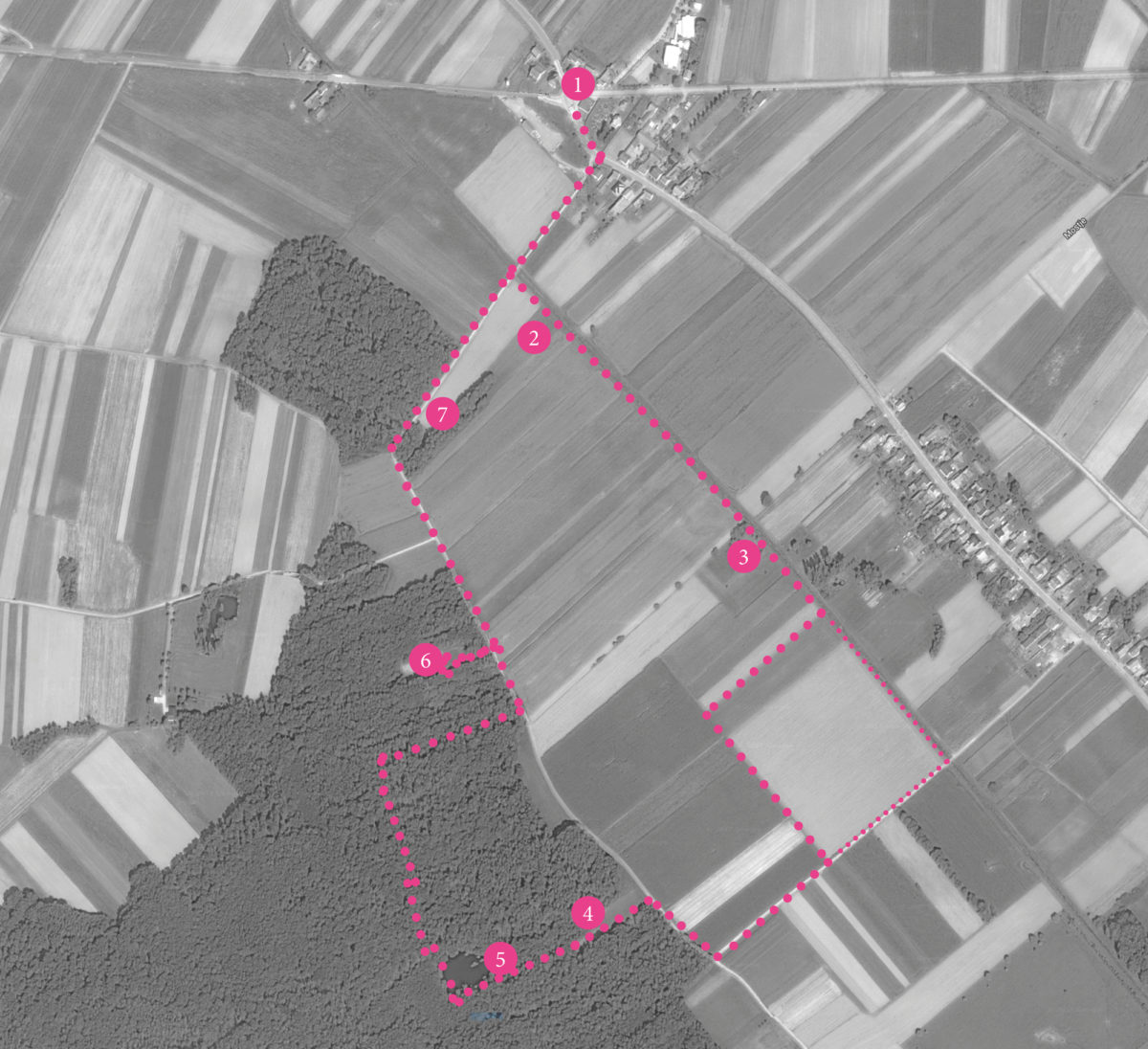
map of the paths through the fields of Genterovci: 1 - Supermarket, Empty House, Dandelion Parade | 2 - Food Fields: amount of water | 3 - Food Fields: 1 person/year | 4 - Food Fields: 1 dish for 4 people | 5 - Autonomous Agriculture - tree sap harvesting robot | 6 - Food Fields: energy field | 7- Autonomous Agriculture - snail collecting robot | along the whole paths various pink element: highlighted realities
"Beyond nostalgia and romantic longing for lost traditions, the Countryside Reloaded collective project refers to the manifestation of a hyper-reality related to a constructed countryside illuminated by the designer’s interventions."
Bio 25 catalogue
a small documentary summary of the path and projects in Generovci, Slovenia captured on site in summer 2017
video still image credit: Delfino Sisto Legnani & Marco Cappelletti - MAO 25
Johanna Schmeer: autonomous agriculture
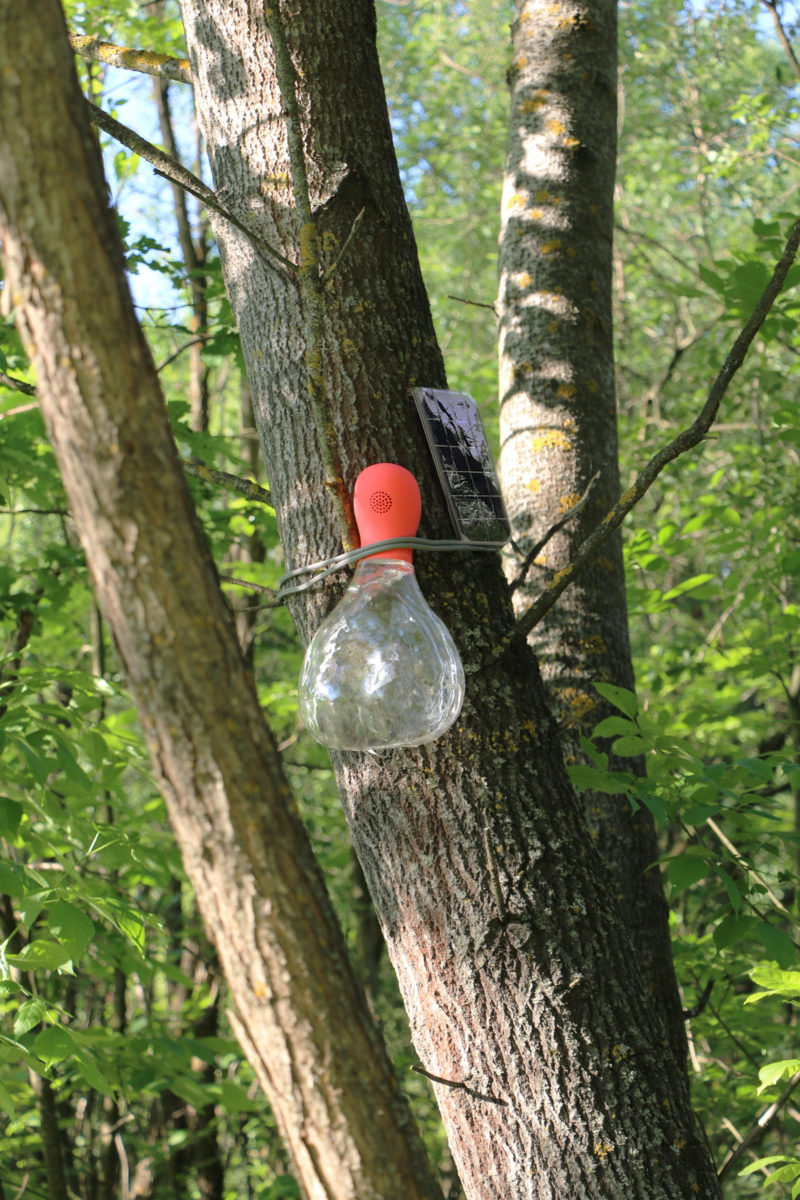
birch tree sap robot

the project autonomous agriculture investigates the ways increased automation could lead to new economic and social systems in the countryside, one dominated by a symbiosis between nature and digital technology. Using two plots of land in Genterovci as a test site, one solar powered robots harvests the healthful, drinkable sap from birch trees, and a group of autonomous roots collects snails in a field to reduce the need for pesticides and to sell them forward as a delicacy. Autonomous Agriculture explores the idea of non-anthropocentric agriculture in which the existing power structure is changed. People also become tools for the machine, rather than the machine serving as a mere tool for people.
mischer’traxler studio: food fields
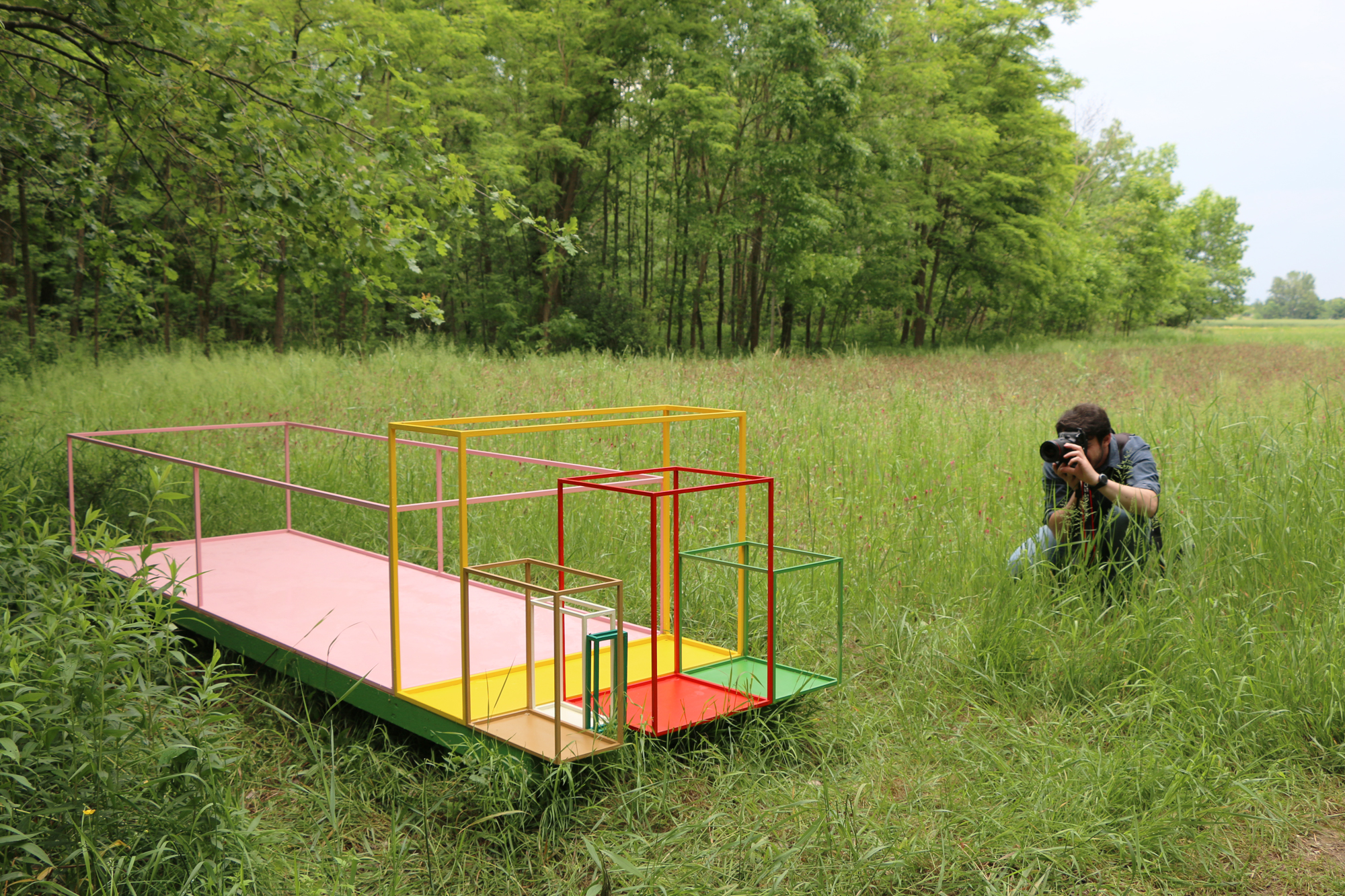
the food fields project transforms data on food production and land use into 3D infographics. Colourful elements show, on a representative scale, how much land is required per person per year to produce enough food; or similarly, show the amount of land used to create specific meals. The biggest field reveals how the energy that is put into the production of wheat is distributed between factors such as fuel, machinery and pesticides, and leaves us with the shocking realisation that just 0,03% of energy can be attributed to human labour whereas 47,2% of the energy used is required for fertilizers.
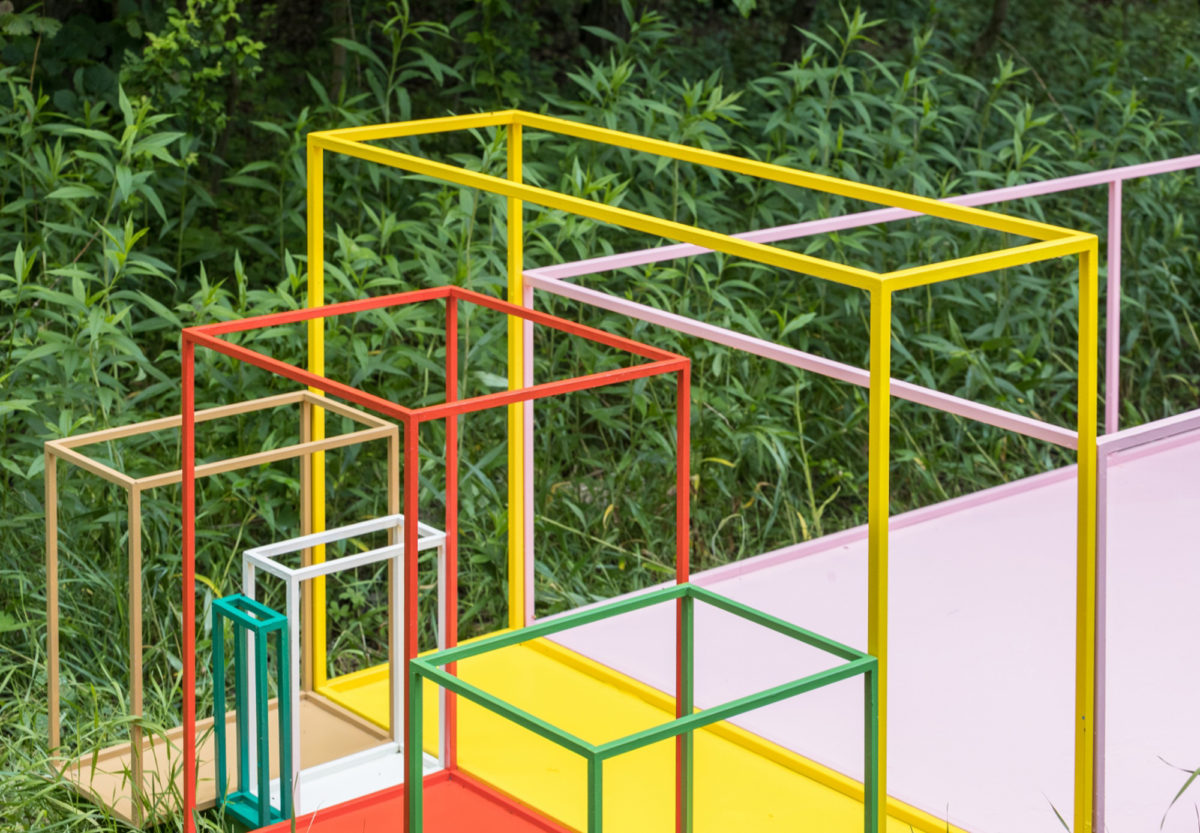
detail of the recipe field
image credit: Delfino Sisto Legnani & Marco Cappelletti - MAO 25
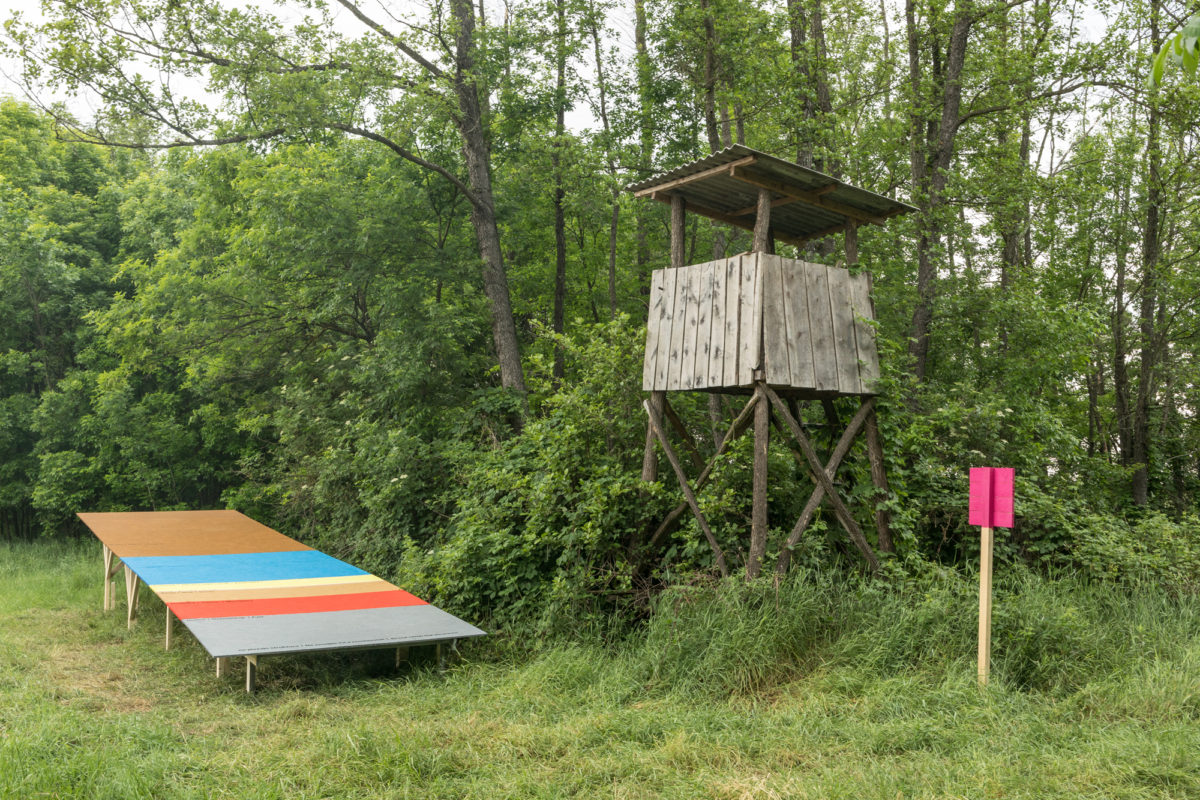
energy food field
image credit: Delfino Sisto Legnani & Marco Cappelletti - MAO 25
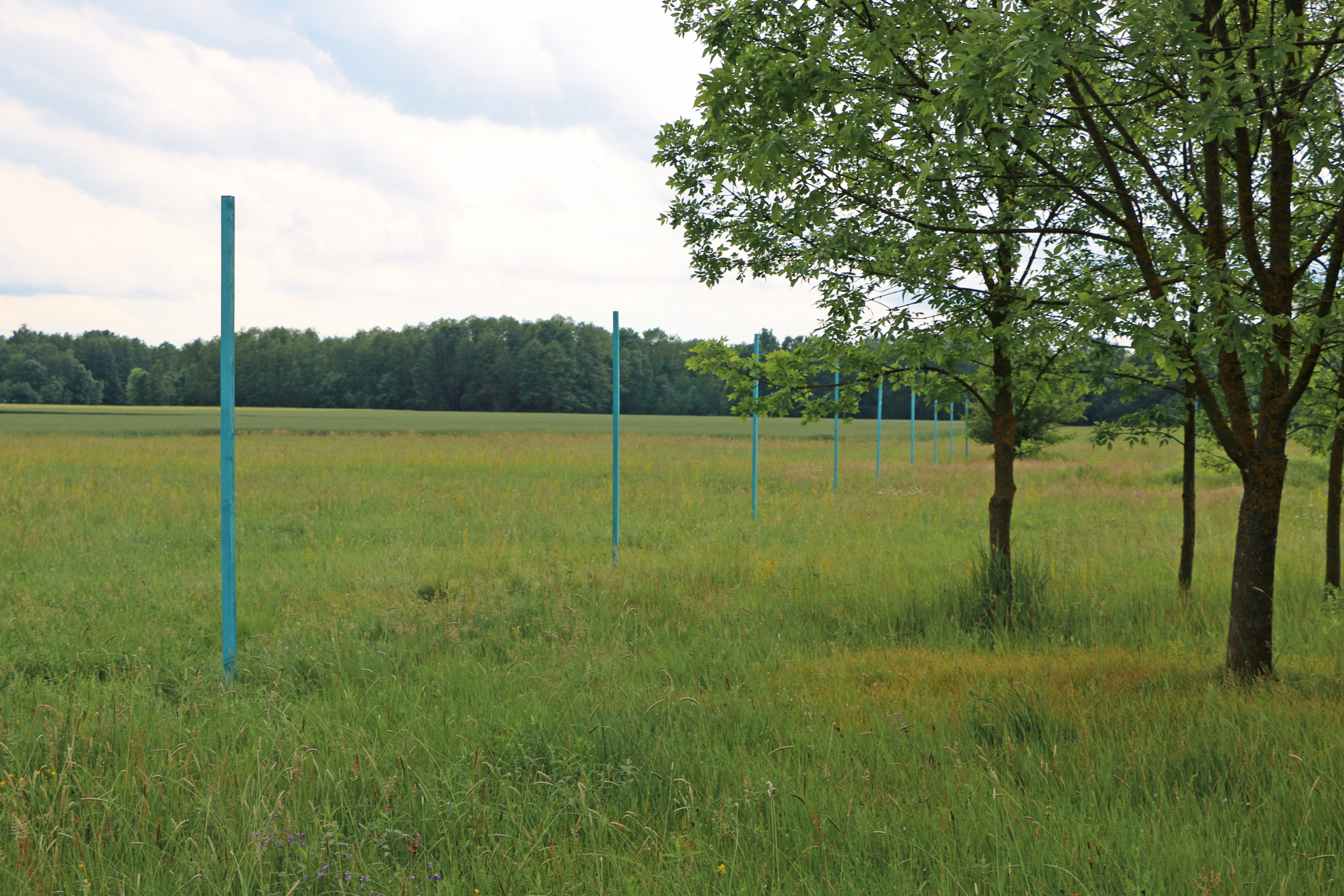
one person per year food field
the blue painted pegs mark the space required to feed one person for one year
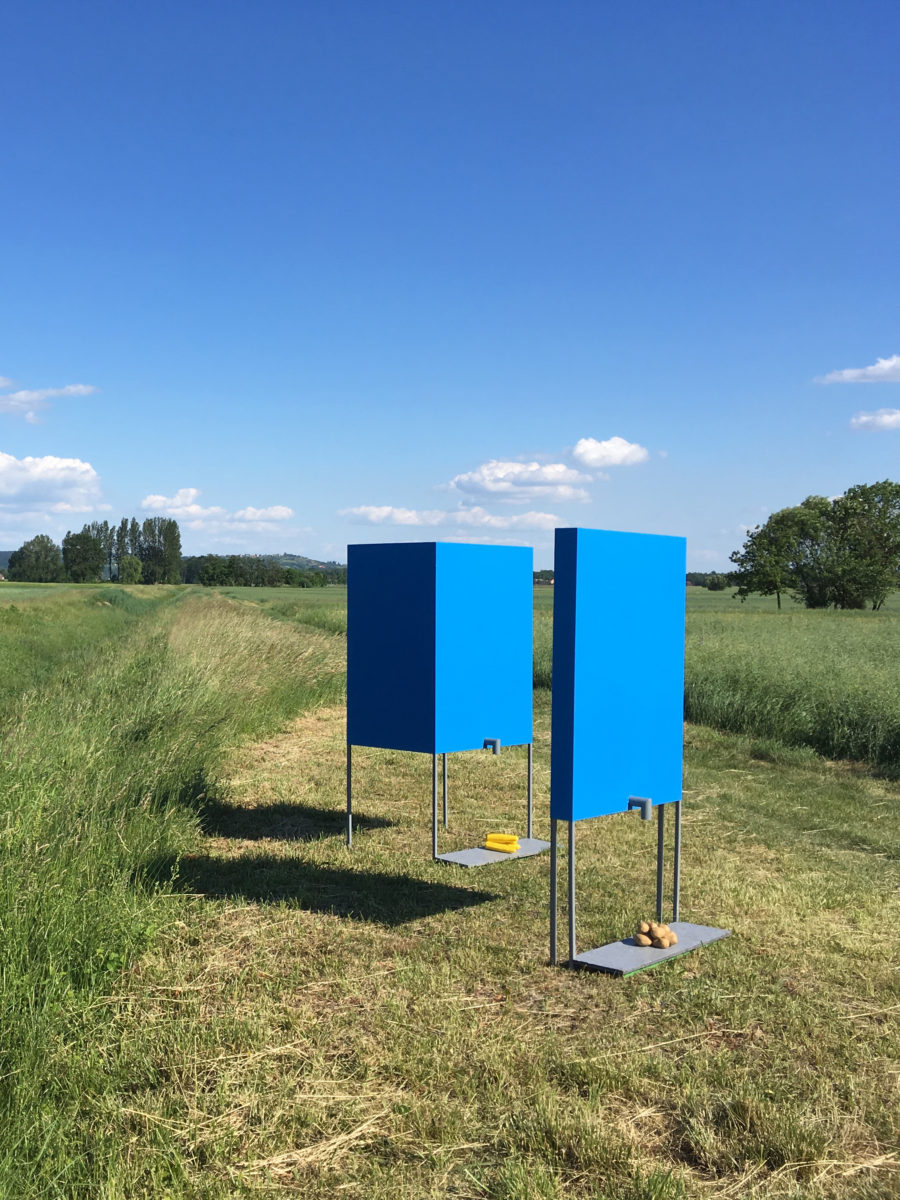
amount of water food field
the volumes visualise the amount of water needed to grow one kilogram of potatoes (front right) and one kilogram of corn (back left)
1. the countryside as constructed nature for food production.
the thoughts that we tried to bring into the projects
2. less manual work, more automated agriculture.
3. fewer people, empty buildings.
4. new roles? new traditions?
5. old structures, transformed purposes.
Sara Evelyn Brown: empty house

abandoned house in Genterovci
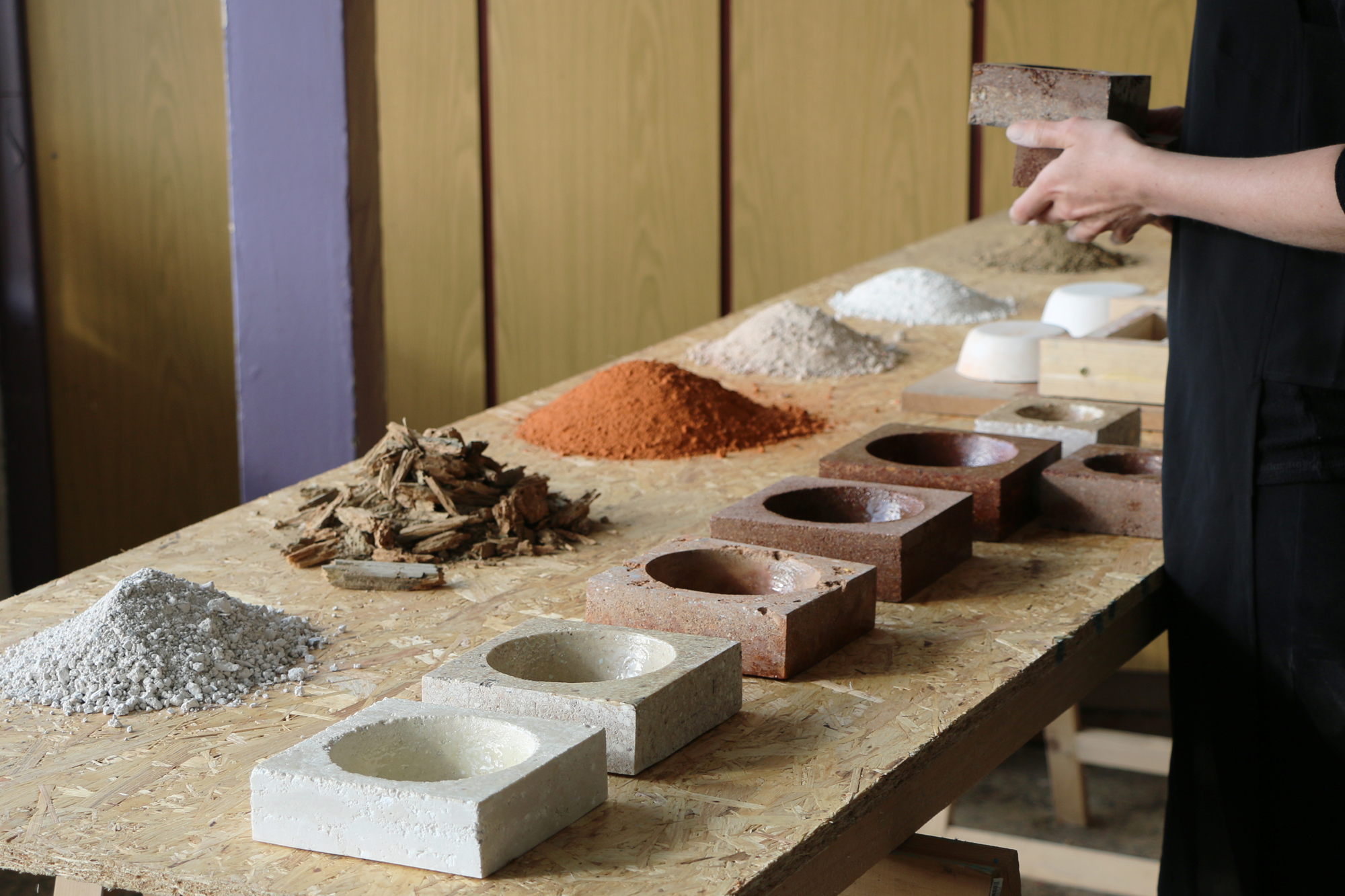
for the empty-house project parts of abandoned houses in the countryside have been collected and transformed into a dust- and gravel-like material used to forge new, synthetic objects containing fragments in miniature of these once lived-in places. In the transformation of these structures the artificial aspect of the countryside is highlighted by this new material in both its hybrid natural and plastic materiality. The shape of the plate, partly brick and partly bowl, reminds the user of the house, the material from which it originated. The plates for the food tours in Genterovci came directly from the ruins of an abandoned house in the nearby fields.
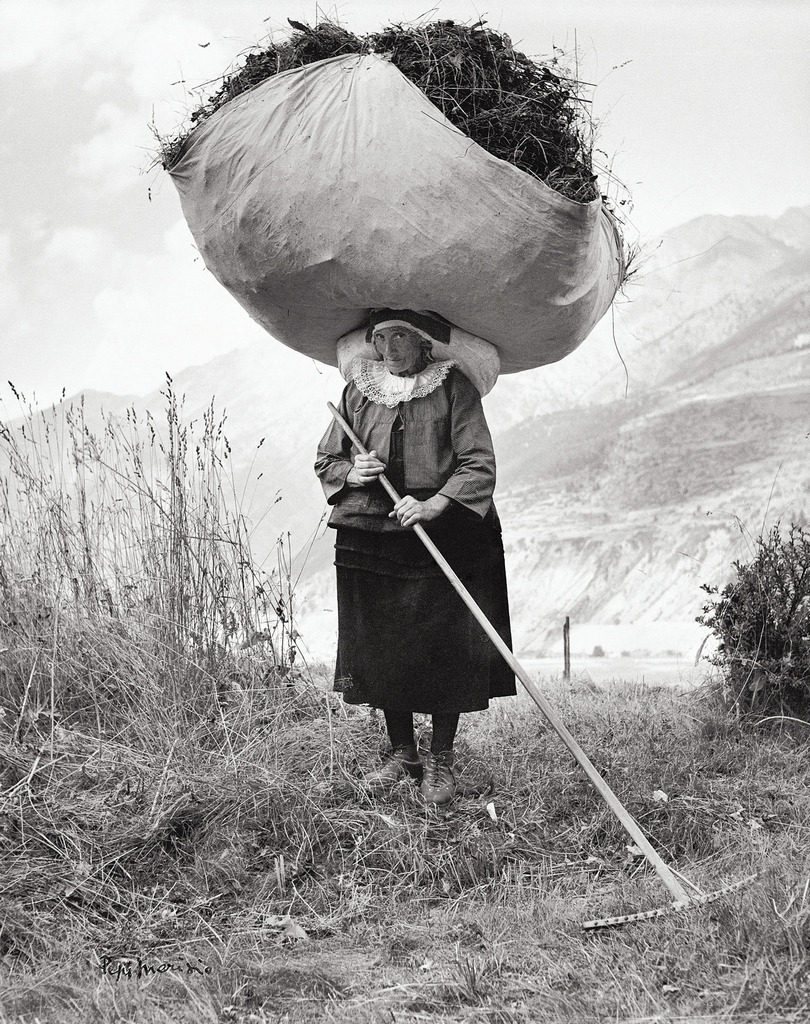
during the research phase historical references were taken into consideration... image credit: Pepi Merisio - haying, 1959

...as well as local traditions. image credit: Simon Koležnik 'Borovo gostuvanje' 2008
Lucia Massari & Nina Mršnik: dandelion parade
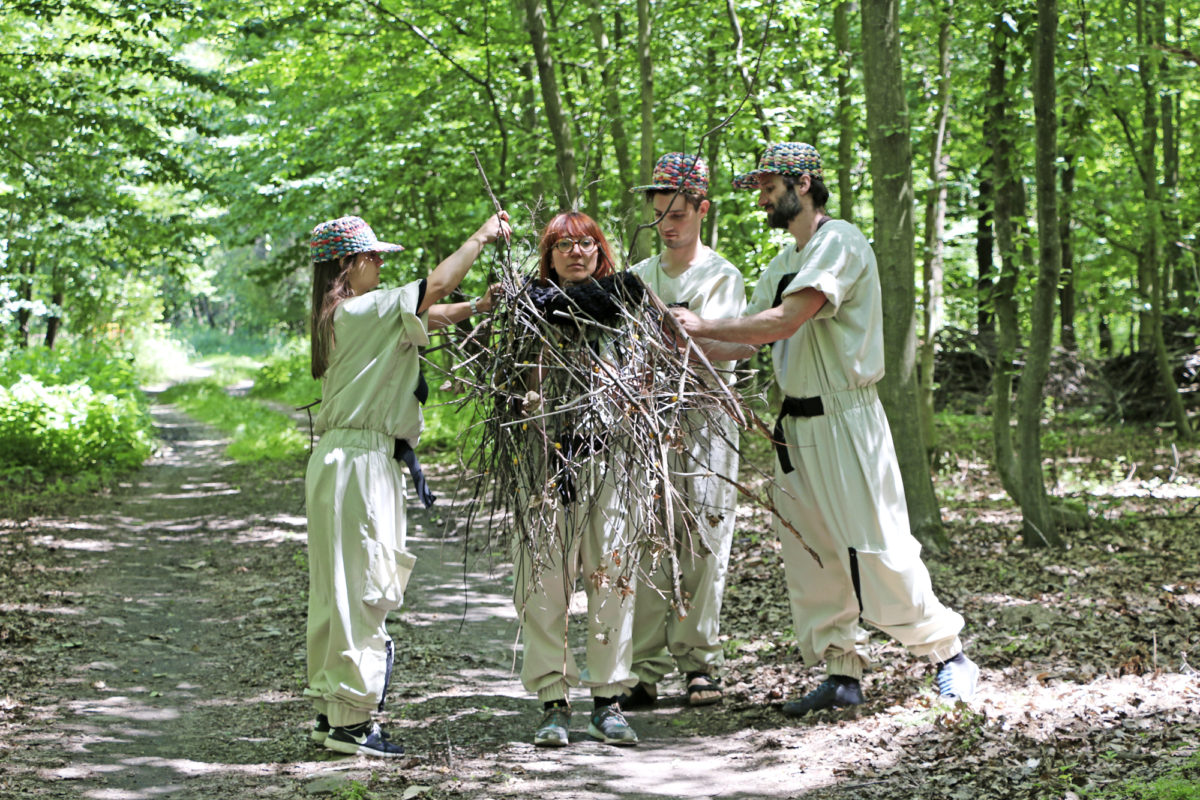
each of the main costumes full-fills another function during the food tours. The stick-man costume
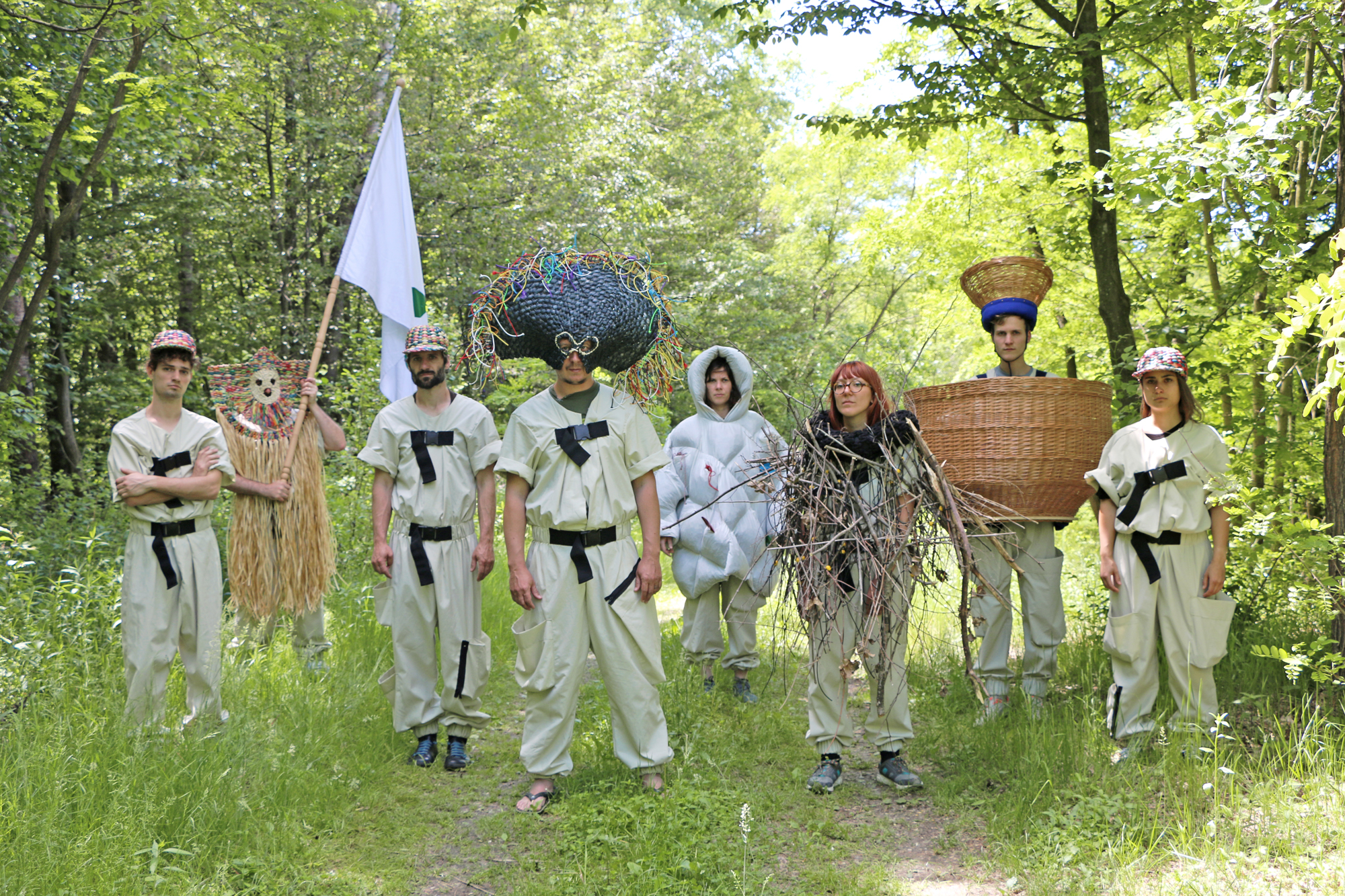
dandelion parade aims to reconnect people with nature and to create community awareness. The participants dress in special costumes equipped with tools with which to forage wild herbs, edible plants and seasonal goods. The collection of costumes triggers memories of rural folklore and, inspired by traditional items, they also serve various other functions: one carries communally collected food, another collects wooden sticks, one serves as a water source along the way, and another is for transporting all the tools needed. The performance requires a collective effort to gather enough food for a communal dinner.
Giulia Soldati: abandoned supermarket
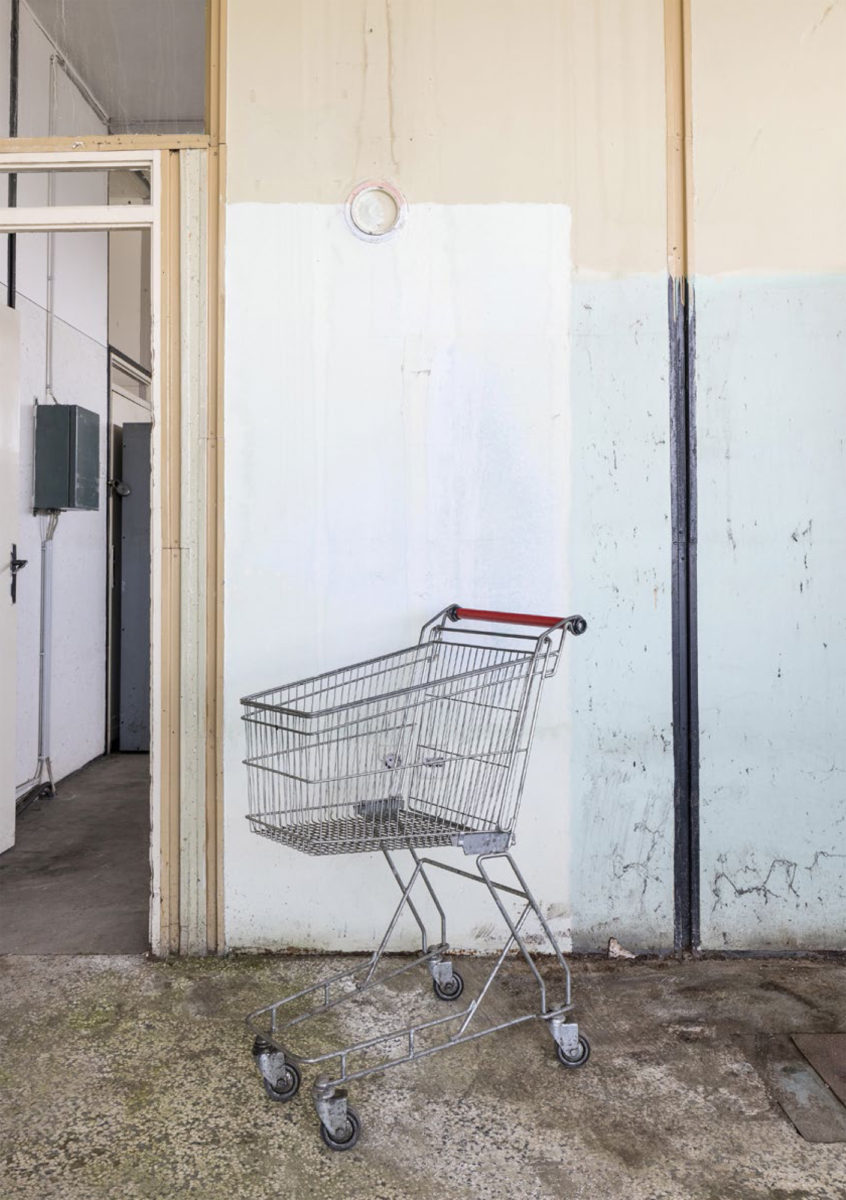
the abandoned supermarket in Genterovci, a beautiful remaining structure from Yugoslavian times,
image credit: Delfino Sisto Legnani & Marco Cappelletti - MAO 25
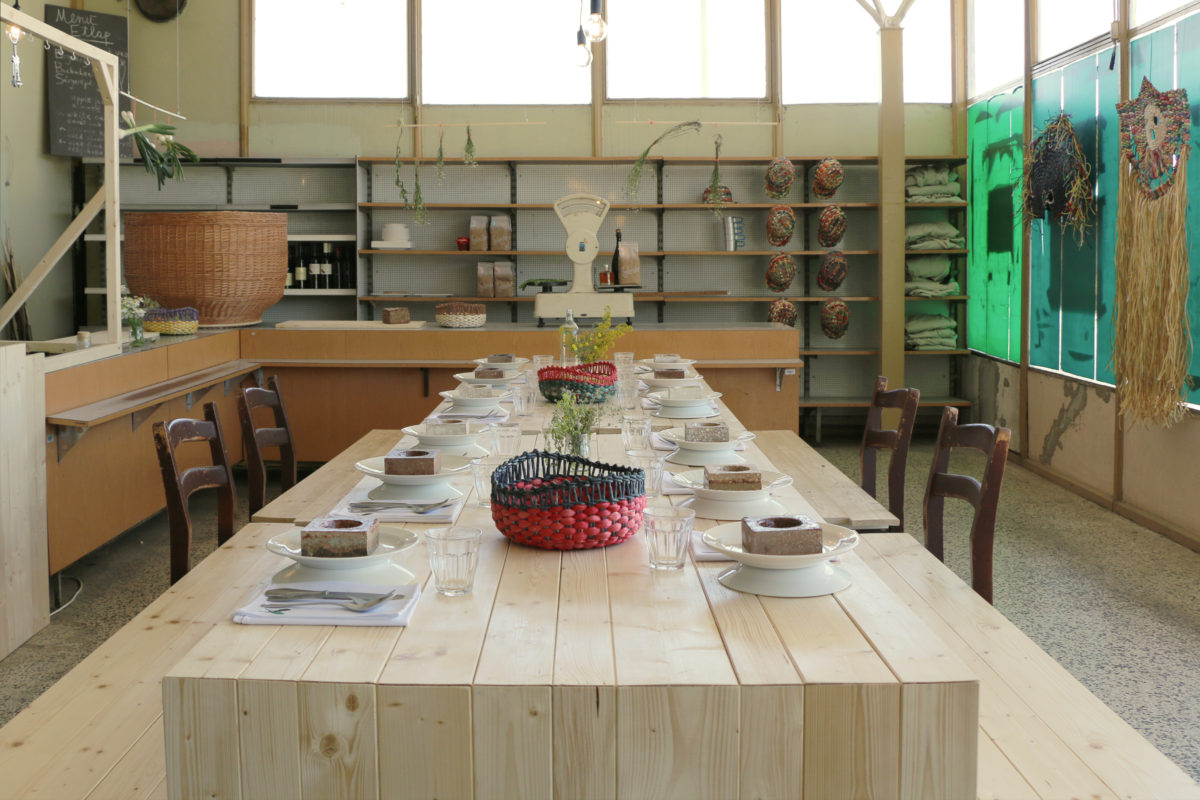
a pop-up restaurant and kitchen for participants of the dandelion parade - food tours

the abandoned supermarket is the starting and end-point of the Dandelion food tour, becoming a place of gathering and a place of and for reconnection. Participating guests fill the space with their presence by temporarily taking the space back and redefining its roles and significance through the experience of food. The designed changes, such as a kitchen, dining tables, and benches act as parasites on the supermarket´s inventory, partly lying on top of it and partly hanging on to it.
image credit: Delfino Sisto Legnani & Marco Cappelletti - MAO 25
building and constructing the projects directly in Genterovci
“Through these varied approaches, each component of the episode, sensitively revisited and staged in the current exhibition, challenges the viewers' perception of the countryside.”
excerpt from exhibition pamphlet
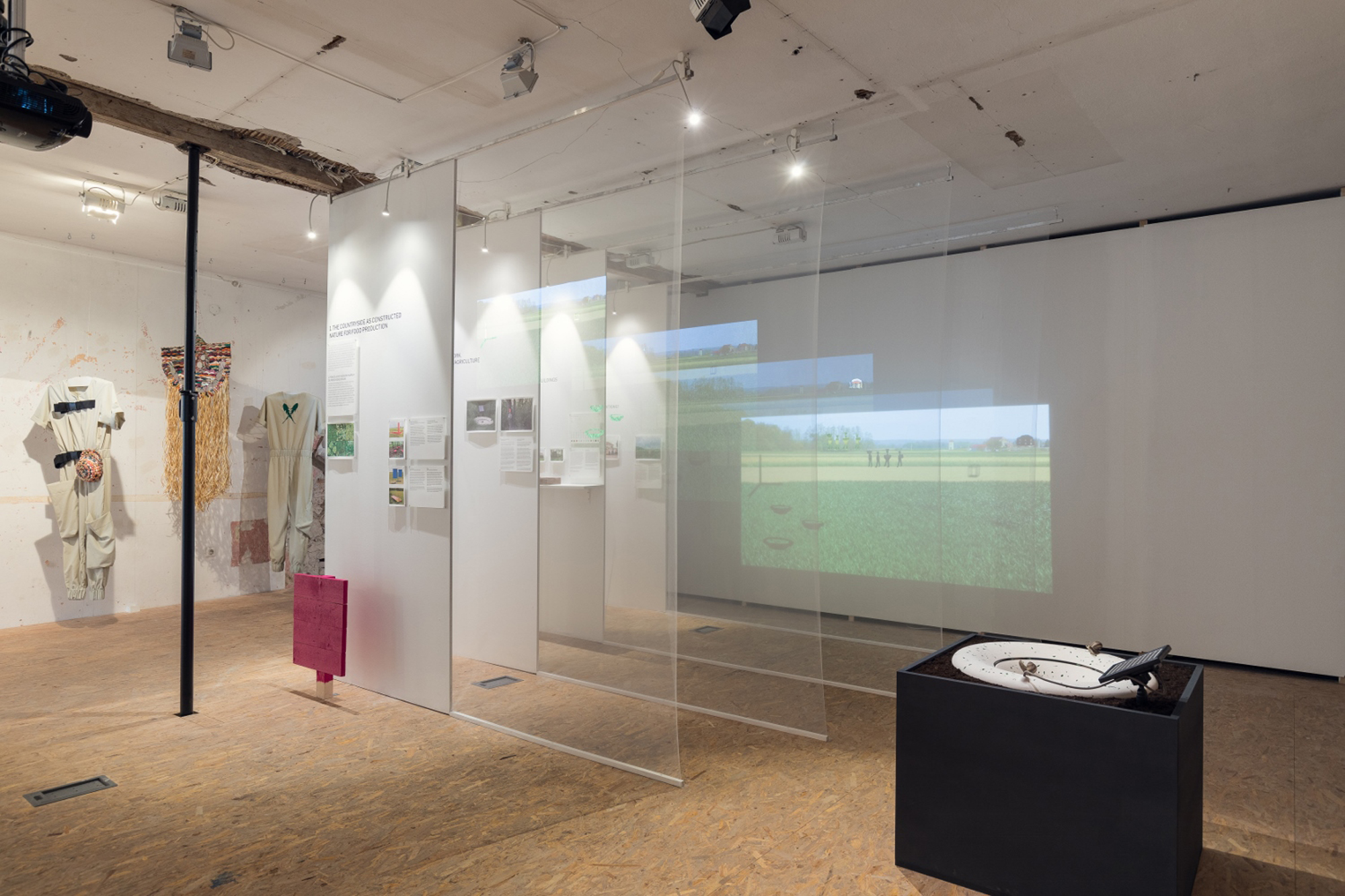
exhibition view of the project set up at MAO in Ljubljana, exhibition design: mischer'traxler studio
image credit: Delfino Sisto Legnani & Marco Cappelletti - MAO 25
-
team countryside reloaded
-
additional feed back by
-
team
Katharina Mischer, Thomas Traxler, Elisa Polner, Bernd van Riel
-
special thanks to
Robert Recek from the municiality of Lendava,
all the farmers from Genterovci that allowed us to
use their fields and grounds for some of the projects